Looking for a cute dog breed that melts hearts on Instagram and fits family life? Before you bring home that squishy-faced pup or fluff-ball with teddy-bear eyes, it’s worth peeking behind the bow. Many popular, cute dog breeds—from tiny toys to big cuddle bugs—carry hidden health issues that can mean higher vet bills, lifestyle compromises, and sometimes shorter lifespans. This guide walks you through 33 adorable breeds with a friendly, fact-driven look at what makes them so lovable, what health concerns commonly pop up, how those concerns can affect quality of life and lifespan, and real-world care tips to keep them comfortable and thriving.
If you care about responsible pet parenting, breed health, and lifespan, grab a coffee and dive in—you’ll find plain-English advice, specific risks (like BOAS, IVDD, DCM, and cancer predispositions), and practical prevention strategies you can use from day one. Let’s help you choose with both your heart and your head.
#33 – Shetland Sheepdog
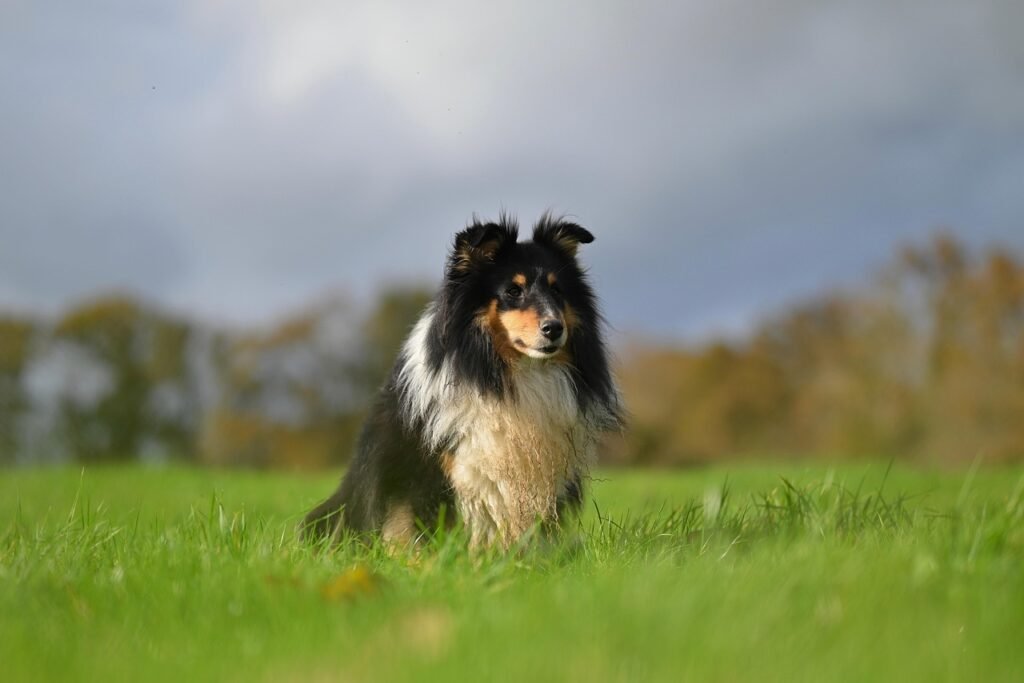
Often called the “Sheltie,” this breed looks like a miniature version of the Rough Collie and is adored for its intelligence and elegance. Families love them for being both loyal companions and agile sports dogs.
Description & popularity. With their thick double coat, almond eyes, and alert expression, Shelties capture attention wherever they go. They are especially popular among active households and dog sport enthusiasts due to their versatility.
Cute traits. Their fox-like faces, fluffy manes, and gentle personalities make them appear like living plush toys. Children and adults alike find them captivating.
Health concerns. Unfortunately, Shelties are prone to Collie Eye Anomaly, thyroid disorders, dermatomyositis, and the genetic MDR1 drug sensitivity. These hidden issues can compromise both comfort and lifespan if untreated.
Care tips. Genetic testing is vital. Owners should avoid unsafe medications, keep up with routine vet visits, and maintain coat health with regular grooming.
#32 – Miniature Schnauzer
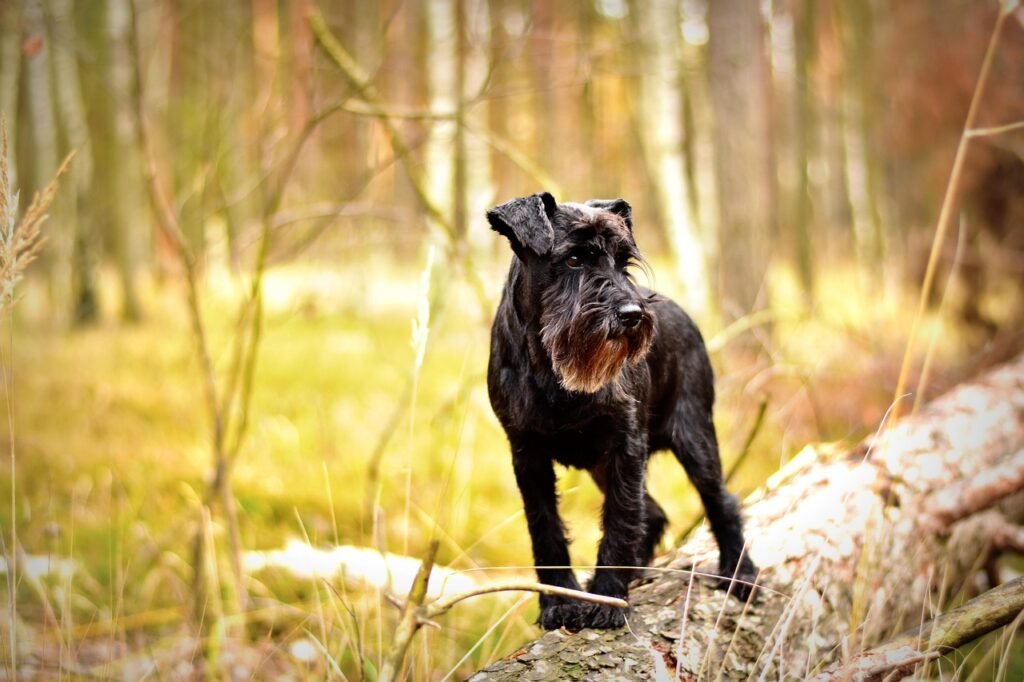
With their bushy eyebrows and little beards, Mini Schnauzers look like wise old men trapped in playful little bodies. They’re the kind of dogs that make you laugh with their cheeky expressions and endless curiosity. It’s hard not to smile when one trots toward you with that proud, bouncy gait, beard swaying in the breeze.
Description & popularity. They are one of the most popular terrier breeds thanks to their adaptability—happy in both city apartments and suburban homes.
Cute traits. Their small stature paired with that bushy “mustache” wins over hearts. They are often described as little gentlemen with big personalities.
Health concerns. Common issues include pancreatitis, diabetes, hyperlipidemia, and bladder stones, all of which can cut healthy years short.
Care tips. Owners should stick to low-fat diets, monitor weight carefully, and ensure routine vet checks to prevent flare-ups.
#31 – American Cocker Spaniel
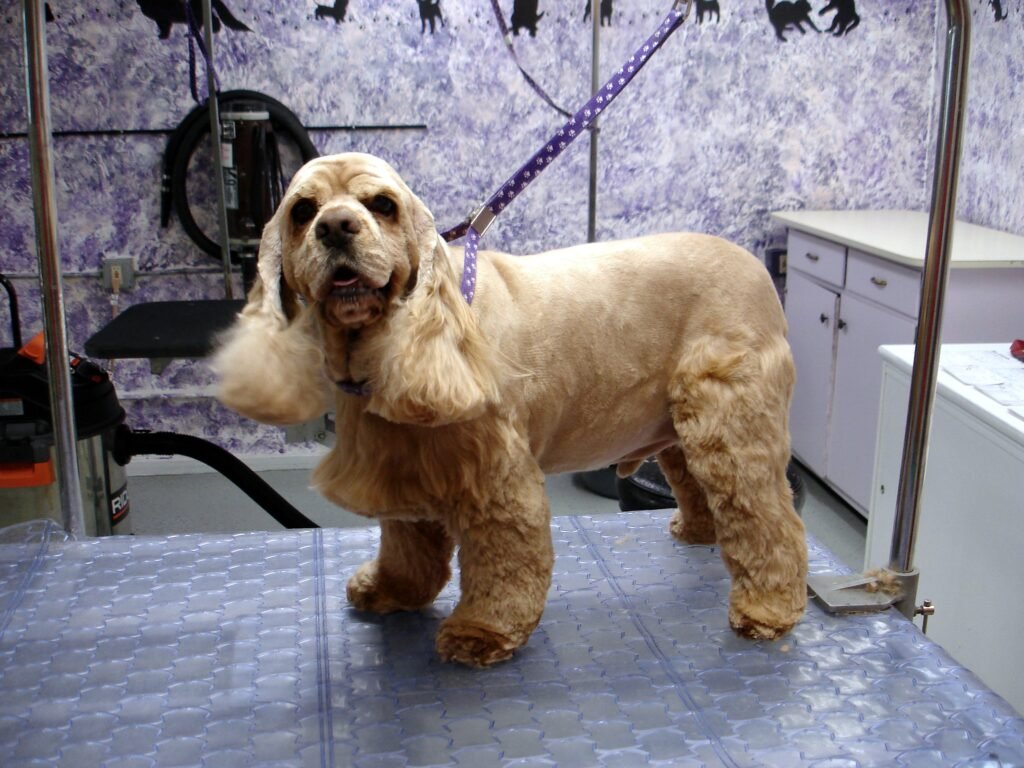
There’s something magical about a Cocker Spaniel’s eyes—soft, soulful, and endlessly loving. They have a way of melting hearts the second they tilt their head or snuggle close. If you grew up watching Lady and the Tramp, chances are you already dreamed of having a Cocker, because they truly embody that storybook charm. This breed became especially popular in mid-20th century America, partly due to Disney’s Lady and the Tramp. They remain beloved family dogs today.
Cute traits. Their flowing coats and tender expressions give them a puppy-like innocence that appeals across generations.
Health concerns. Cockers are prone to chronic ear infections, cataracts, glaucoma, and autoimmune diseases. Ear pain and vision issues may affect daily life and reduce overall lifespan.
Care tips. Diligent ear cleaning, regular grooming, and scheduled ophthalmology checks are essential to keeping them comfortable.
#30 – Beagle
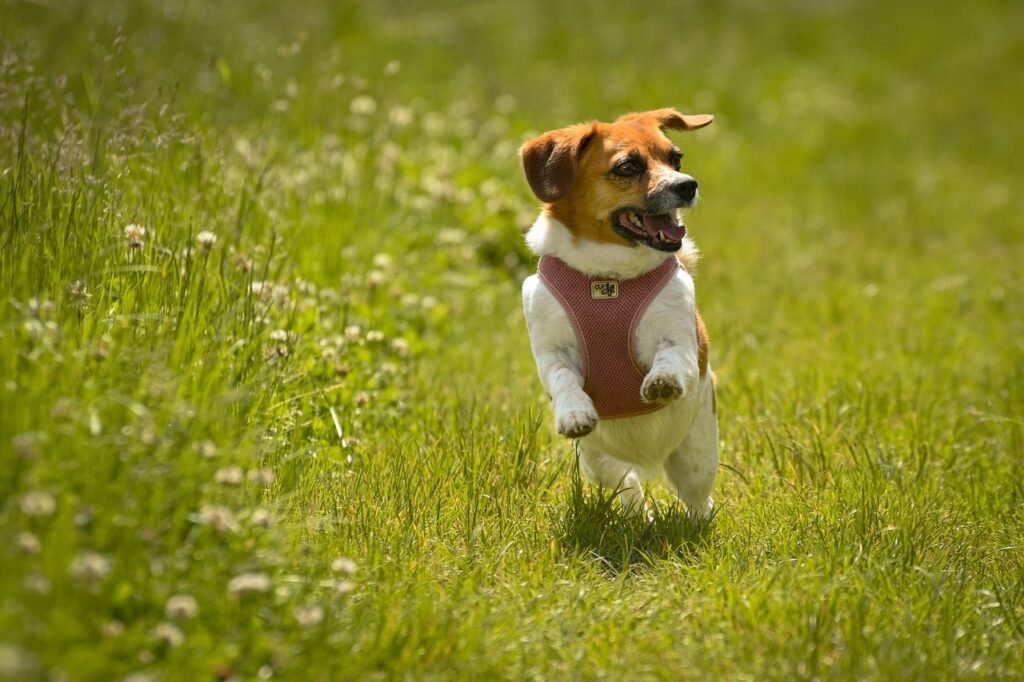
Beagles are the definition of “happy-go-lucky.” Those floppy ears, wagging tails, and mischievous noses can brighten even the darkest days. They’re the kind of dogs that love adventure as much as they love curling up on the couch with you, making them feel more like a best friend than a pet.
Description & popularity. Beagles are one of America’s most popular family dogs, adored for their adventurous spirit and loyalty. Their strong noses also make them stars in detection work.
Cute traits. Their rounded heads, “puppy-dog” eyes, and baying voices add to their cartoon-like charm.
Health concerns. Hidden issues include obesity, hypothyroidism, epilepsy, and frequent ear infections. Without management, these conditions may shorten their otherwise sturdy lifespan.
Care tips. Daily walks, portion control, and vigilant ear hygiene will help Beagles stay healthy and extend their active years.
#29 – Siberian Husky
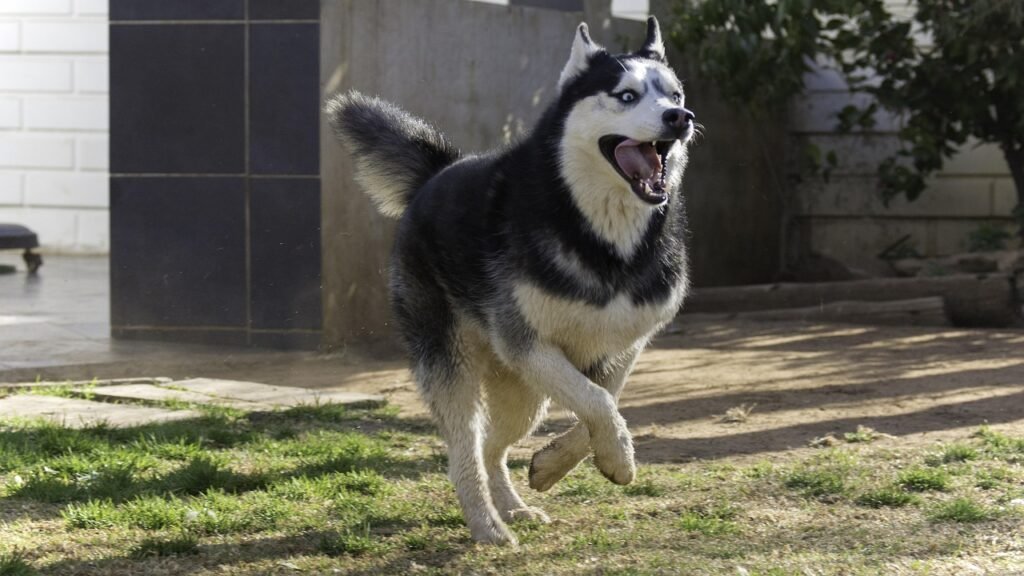
Few dogs stop people in their tracks like a Husky. Those ice-blue eyes, dramatic howls, and wolf-like good looks make them feel like wild spirits who somehow agreed to live in our homes. Huskies have a way of making even an ordinary walk around the block feel like an Arctic expedition.
Description & popularity. Bred as sled dogs, Siberian Huskies are energetic, athletic, and highly social. Their reputation as escape artists and talkative “drama queens” only adds to their charm. They’ve become hugely popular on social media thanks to their striking eyes and funny vocalizations.
Cute traits. Their “smiling” expressions, dramatic personalities, and love for play make them endlessly entertaining. They’re often compared to mischievous children—full of antics but impossible to stay mad at.
Health concerns. Despite their hardy working-dog background, Huskies are prone to eye conditions (cataracts, corneal dystrophy), autoimmune skin problems, and joint issues. Unmanaged, these can reduce their quality of life and even shorten their lifespan.
Care tips. Regular eye exams, skin checks, and a balanced diet help. They thrive on plenty of exercise but should be carefully monitored in warm climates due to heat sensitivity.
#28 – Samoyed
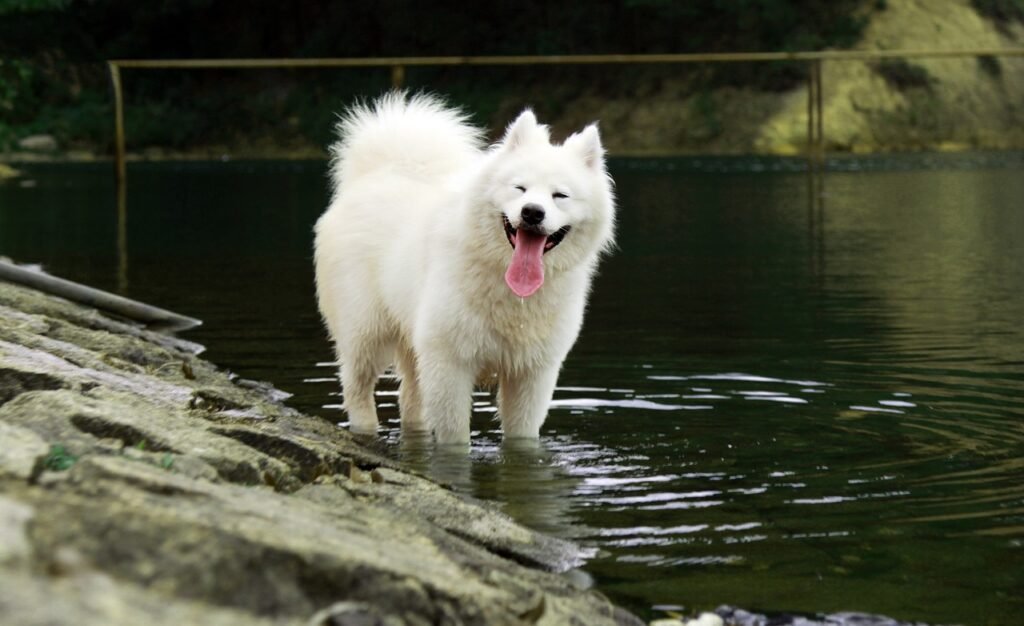
With their perpetual “Sammy smile” and snow-white coats, Samoyeds look like living teddy bears. They radiate joy and warmth, and it’s impossible not to feel happier when one greets you with a wagging tail and a grin that seems to light up their whole face.
Description & popularity. Originally bred in Siberia to herd reindeer and pull sleds, Samoyeds are friendly, adaptable, and famously good with families. Their stunning looks and easygoing nature have made them popular worldwide.
Cute traits. That iconic fluffy coat and heart-melting smile make them look almost magical—like dogs straight out of a fairytale. They’re gentle giants who adore people and thrive on companionship.
Health concerns. Beneath their beauty, Samoyeds can suffer from diabetes, hip dysplasia, hypothyroidism, and certain eye conditions. Without management, these can cut into their years of playfulness.
Care tips. Regular vet screenings, joint support, and careful coat maintenance are key. They do best in cooler climates and need daily brushing to keep their skin and coat healthy.
#27 – Doberman Pinscher
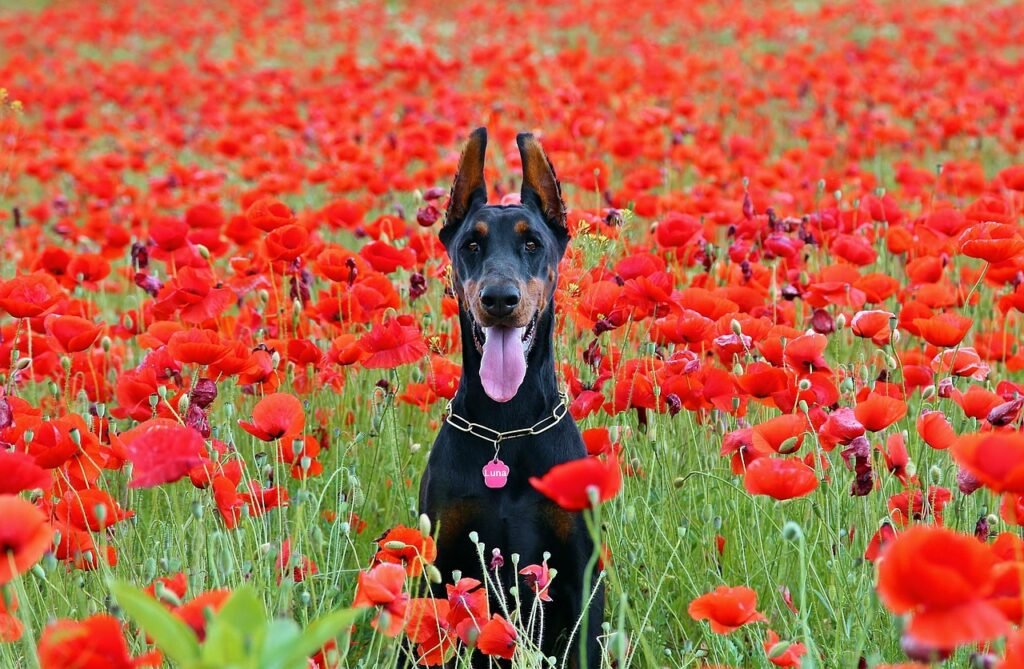
Dobermans may look intimidating with their sleek frames and alert stares, but anyone who has owned one knows their secret—they’re total softies at heart. These loyal protectors often turn into oversized lap dogs when it comes to their families, showing just how affectionate they really are.
Description & popularity. Known as one of the most intelligent and trainable breeds, Dobermans excel as guard dogs, companions, and even therapy animals. Their elegant look and loyal temperament make them a popular choice for experienced owners.
Cute traits. Despite their reputation, Dobies are incredibly affectionate. They lean on their humans for comfort (literally!) and are known for their goofy side when they feel safe and loved.
Health concerns. Dobermans are at high risk of dilated cardiomyopathy (DCM), a condition that can lead to sudden cardiac death, as well as bleeding disorders like von Willebrand disease. These hidden issues can severely shorten their lifespan if undetected.
Care tips. Regular heart screenings, genetic testing, and a healthy diet are crucial. Keeping them lean and active helps support their joints and overall well-being.
#26 – Boxer
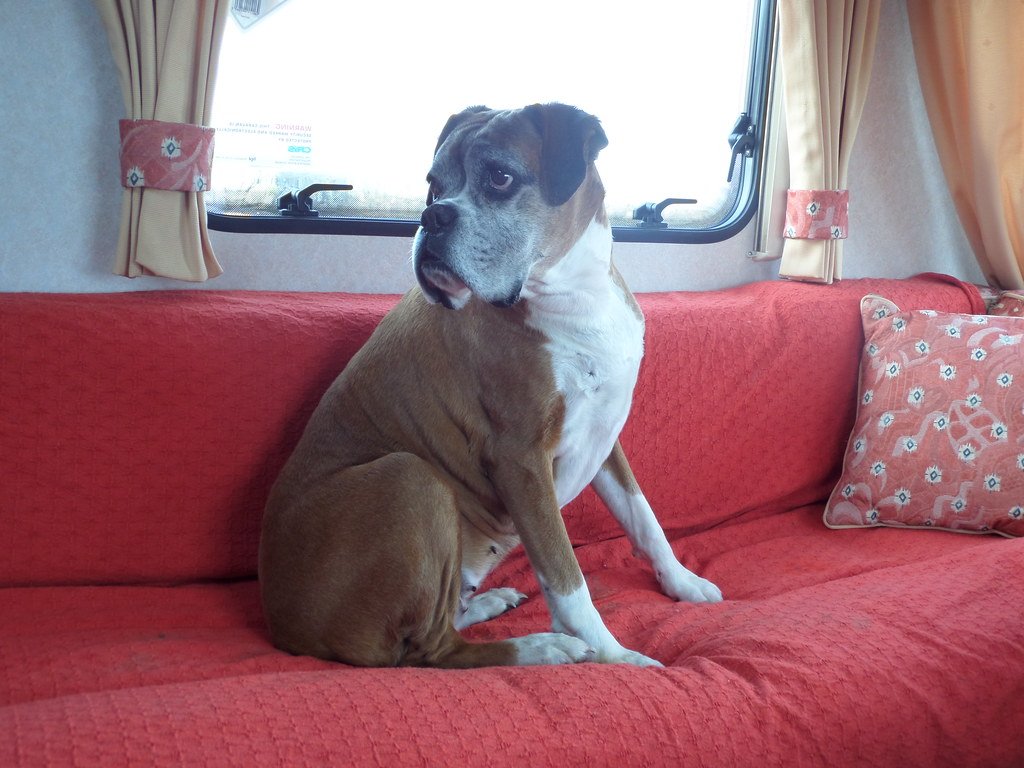
Boxers are the comedians of the dog world—wiggly, bouncy, and full of silly expressions. They act like puppies well into adulthood, making every day with them feel fun and unpredictable. If laughter is the best medicine, a Boxer might just be the cure.
Description & popularity. Boxers were originally bred as working dogs but have become beloved family companions thanks to their affectionate and playful personalities. Their short coats and goofy grins make them easy to spot at the park.
Cute traits. Their exaggerated facial expressions, “kid-like” antics, and eagerness to play make them irresistibly cute. A Boxer’s famous “kidney bean dance” when they’re excited is a sight to behold.
Health concerns. Sadly, Boxers are prone to heart issues (arrhythmogenic right ventricular cardiomyopathy) and cancer (mast cell tumors). Their brachycephalic features can also contribute to breathing challenges.
Care tips. Annual heart checks, monitoring for skin lumps, and keeping them lean are essential. Controlled exercise and a balanced diet help them stay healthy and energetic.
#25 – Great Dane
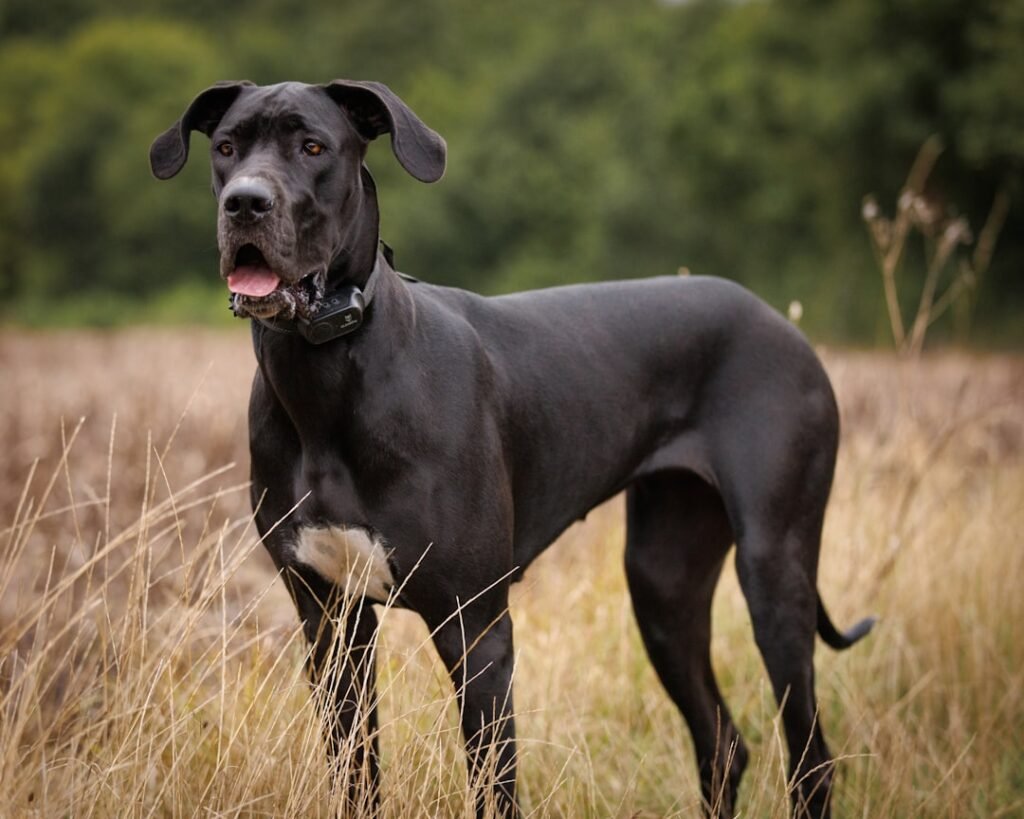
Intro. Despite their towering size, Great Danes are true gentle giants. They love nothing more than curling up (or trying to!) on the couch with their humans, proving that in their minds, they’re just oversized lap dogs. Their sweet nature makes them unforgettable companions.
Description & popularity. Known as one of the tallest dog breeds, Great Danes have long been admired for their elegance and affectionate personalities. Their calm demeanor makes them great family dogs despite their imposing presence.
Cute traits. Their massive size combined with their goofy, loving personality makes them endlessly charming. Few things are cuter than a Great Dane attempting to sit on your lap like a toy poodle.
Health concerns. Unfortunately, Great Danes have short lifespans, often due to gastric dilatation-volvulus (bloat), dilated cardiomyopathy (DCM), and joint issues. These hidden dangers can cut their years of love far too short.
Care tips. Feeding smaller meals, using slow feeders, and avoiding heavy activity after eating can help prevent bloat. Regular cardiac checks and joint support from puppyhood are also key.
#24 – Rottweiler
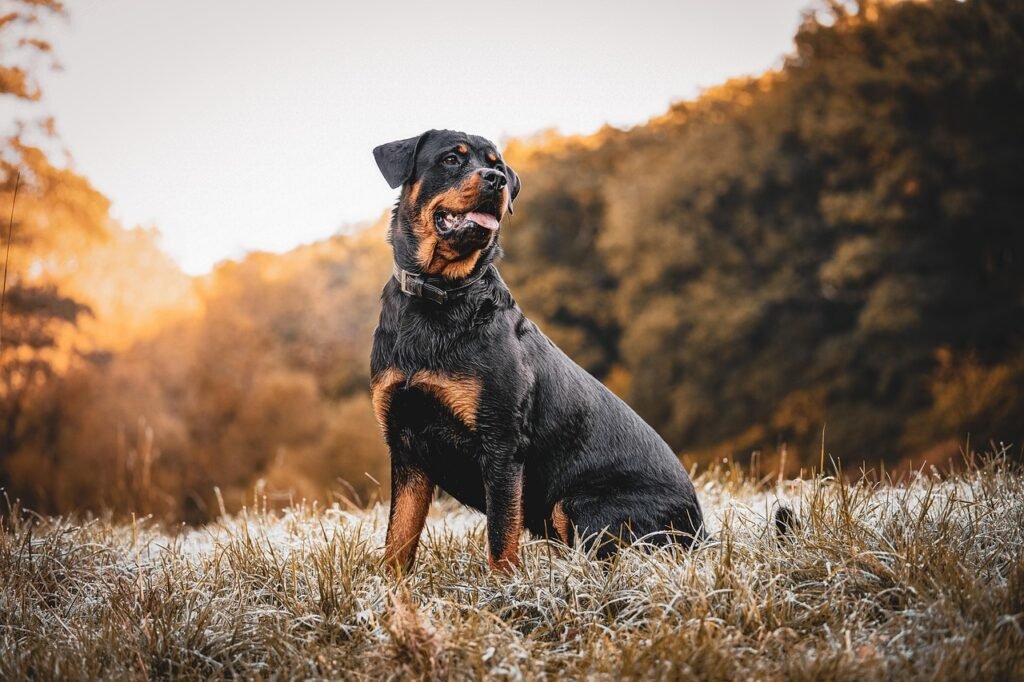
Behind their powerful build and serious expression, Rottweilers are big softies at heart. Ask any Rottie parent and they’ll tell you—these dogs love nothing more than leaning their entire weight against you for a cuddle. Their loyalty runs deep, and when they love you, it’s for life.
Description & popularity. Originally bred for herding and guarding, Rottweilers are intelligent and confident, making them excellent companions for experienced owners. They’ve remained popular in the U.S. for families who want both a protector and a snuggle buddy.
Cute traits. Their expressive “eyebrows,” goofy playfulness at home, and affectionate nature with family members make them endlessly lovable. A Rottie smile is something you never forget.
Health concerns. Rottweilers are prone to osteosarcoma (bone cancer), hip dysplasia, cruciate ligament tears, and bloat. These conditions can cut healthy years short, especially if they become overweight.
Care tips. Weight management, joint-friendly exercise, and awareness of bloat risks (like using slow feeders) can help. Regular vet checkups are key for early detection of cancers and orthopedic problems.
#23 – Bernese Mountain Dog
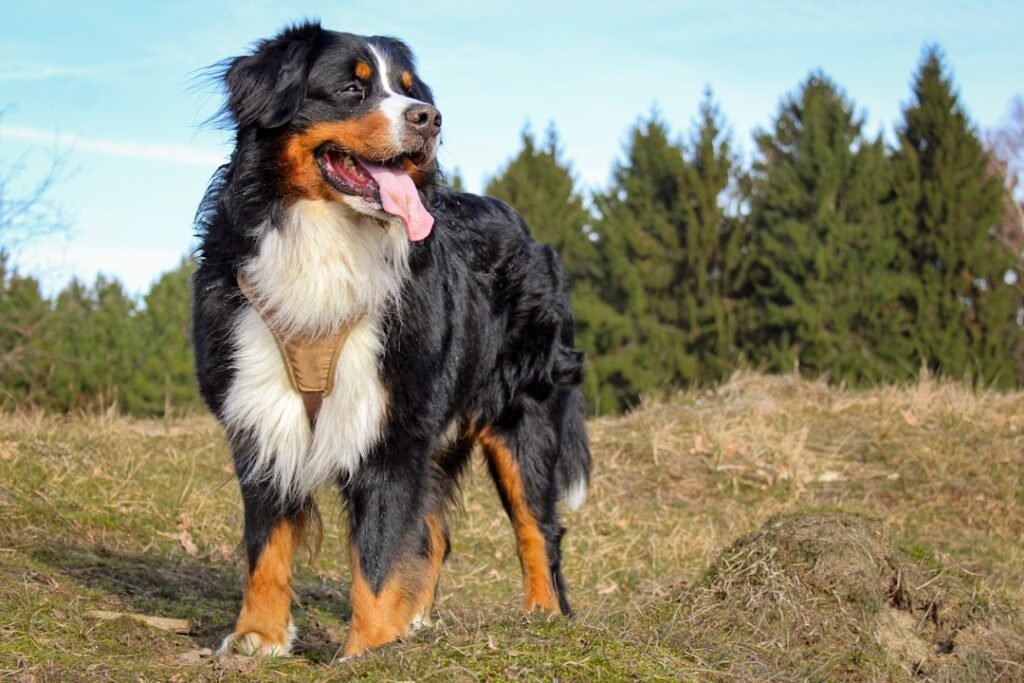
With their gentle eyes and fluffy tri-color coats, Bernese Mountain Dogs are walking teddy bears. They have a calming presence and a sweetness that makes them especially good with children. A Berner has a way of making you feel safe and loved all at once.
Description & popularity. Originally from the Swiss Alps, Berners were used as working farm dogs, pulling carts and guarding livestock. Their loving nature and striking looks have made them a popular family choice despite their size.
Cute traits. Their long, silky coats, kind expressions, and affectionate personalities make them look like oversized stuffed animals. They thrive on companionship and are happiest by your side.
Health concerns. Sadly, Berners are known for their shorter lifespans due to high rates of cancer (especially histiocytic sarcoma), along with orthopedic issues like hip and elbow dysplasia.
Care tips. Choosing breeders who health test is critical. Keep them lean, provide joint support, and schedule regular vet visits for early cancer detection.
#22 – German Shepherd Dog
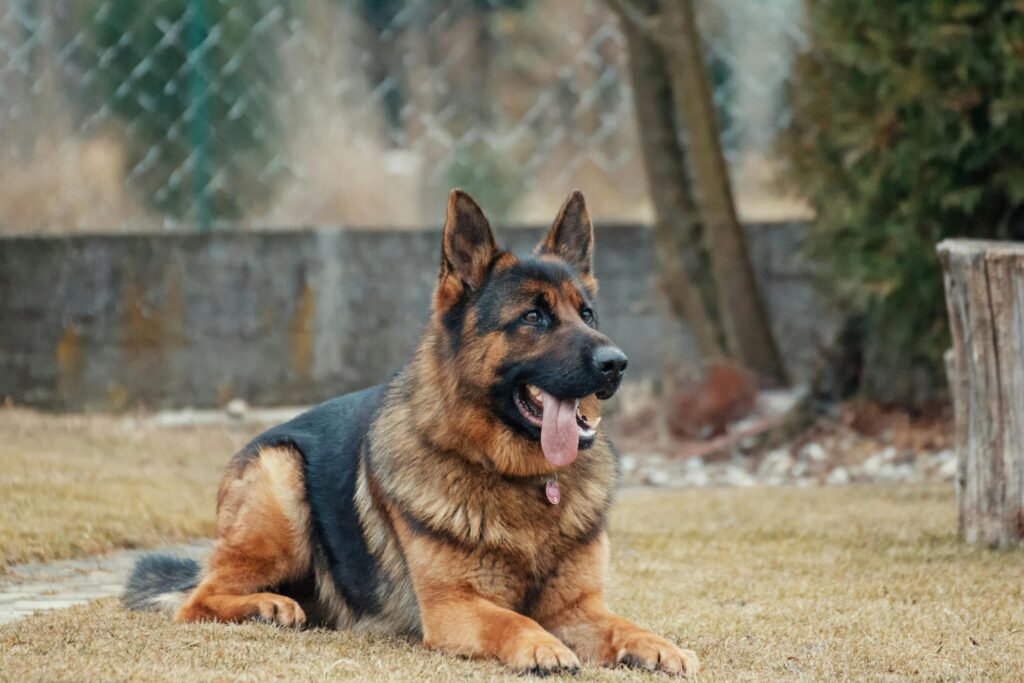
German Shepherds may look noble and serious, but beneath their protective exterior lies a deeply affectionate dog. They’re fiercely loyal, and once you earn their trust, they become your shadow, following you with unwavering devotion.
Description & popularity. Known for their intelligence and versatility, German Shepherds excel in police work, service roles, and as loyal family companions. They’ve consistently ranked among the top dog breeds in the U.S. for decades.
Cute traits. Their oversized ears (especially as puppies), expressive eyes, and goofy side at home balance their working-dog image. They’re just as happy playing fetch as they are guarding the family.
Health concerns. German Shepherds are prone to hip and elbow dysplasia, degenerative myelopathy, and bloat. Mobility issues and sudden gastrointestinal emergencies can drastically shorten their lifespan if unmanaged.
Care tips. Choosing lines with hip and elbow certifications, keeping them lean, and providing low-impact exercise are essential. Early awareness of bloat signs can be lifesaving.
#21 – Labrador Retriever
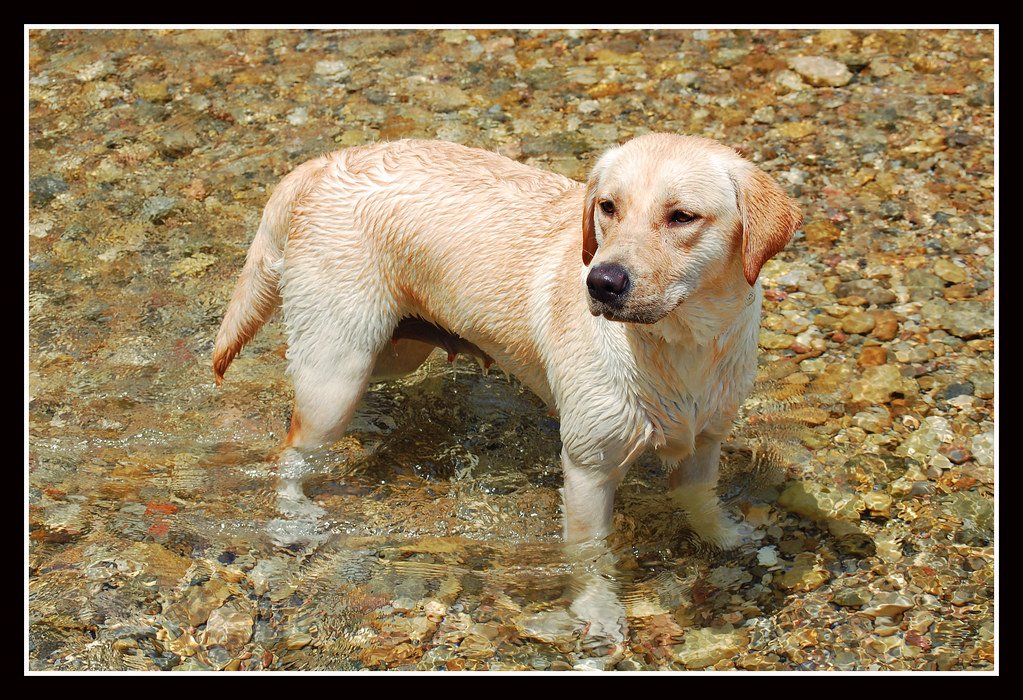
If happiness were a dog, it would be a Labrador. With their wagging tails, goofy grins, and “love everyone” attitude, Labs have a way of making life brighter. They’re the kind of dog that makes every person they meet feel like a best friend.
Description & popularity. As America’s most popular breed for decades, Labs are known for being affectionate, trainable, and adaptable. They’re family favorites, service dogs, and beloved companions worldwide.
Cute traits. Their otter tails, big brown eyes, and clumsy playfulness make them irresistibly endearing. Labs are eternal optimists—always ready for fetch, a swim, or a cuddle.
Health concerns. Labs are notoriously prone to obesity, which increases risks for diabetes, joint disease, and cancer. Hip and elbow dysplasia, cruciate tears, and ear infections are also common.
Care tips. Portion control is key—Labs can’t be trusted around food. Regular exercise, joint support, and weekly ear cleaning help them stay healthy and active.
#20 – Golden Retriever
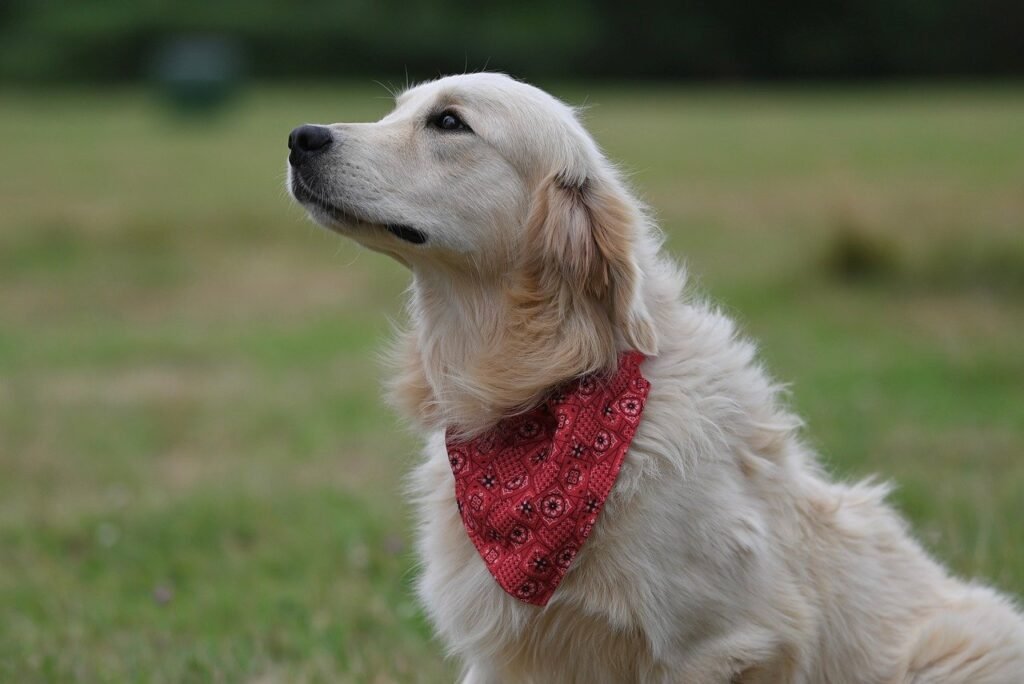
Golden Retrievers are the heartthrobs of the dog world. With their flowing coats and kind, soulful eyes, they radiate warmth and love. A Golden doesn’t just walk into your home—they walk straight into your heart.
Description & popularity. Originally bred as hunting companions, Goldens are known today for their gentle nature, making them ideal family dogs. Their eagerness to please has kept them near the top of popularity rankings for years.
Cute traits. Their permanent puppy smiles, feathered coats, and affectionate personalities make them natural therapy dogs. They seem to know when you need a hug.
Health concerns. Golden Retrievers face high rates of cancer (including hemangiosarcoma and lymphoma), which is a leading cause of shortened lifespans. They also suffer from hip dysplasia and skin allergies.
Care tips. Regular vet checkups, cancer screenings, and keeping them lean can add quality years. Daily exercise and a balanced diet also help manage joint and skin issues.
#19 – Chinese Shar-Pei
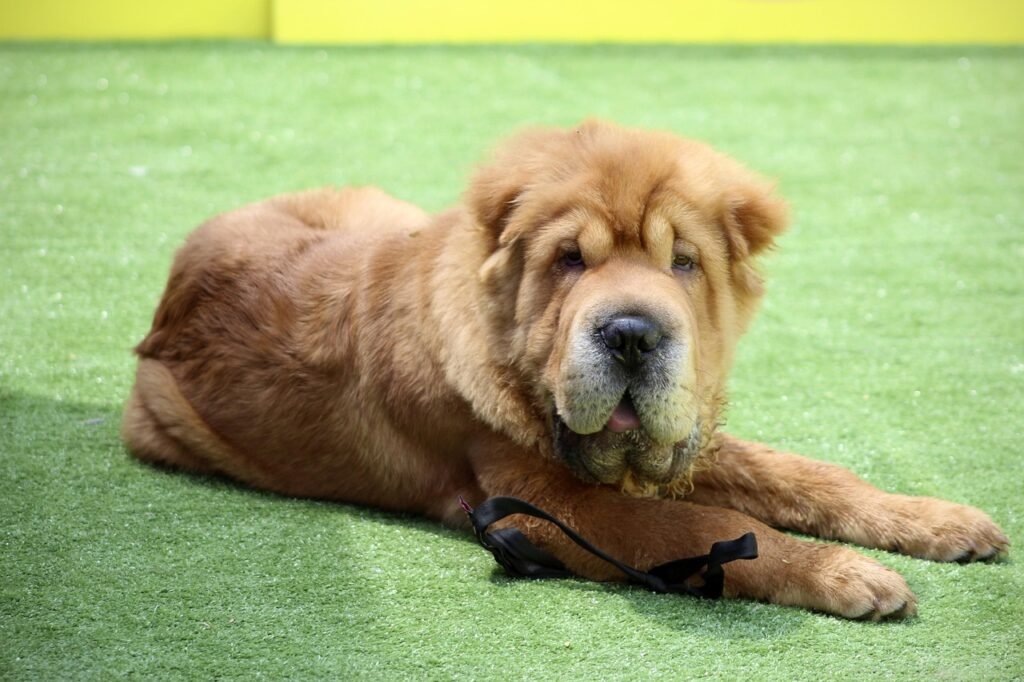
With their wrinkly skin and soulful, almost serious expressions, Shar-Peis look like wise old philosophers trapped in dog bodies. They have a unique, unforgettable charm—partly mysterious, partly cuddly—that makes people fall in love with them at first sight.
Description & popularity. Originally bred in China for hunting and guarding, Shar-Peis are calm, loyal, and protective of their families. Their unusual “hippopotamus” muzzle and folds of skin make them instantly recognizable.
Cute traits. Their puppy wrinkles are the stuff of legend—adorable rolls that make them look like squishy stuffed animals. Even as adults, their distinctive look sets them apart from any other breed.
Health concerns. Unfortunately, those wrinkles come with hidden problems: Shar-Pei fever, entropion (inward-rolling eyelids), and chronic skin infections. These issues can cause pain, repeated vet visits, and may shorten their healthy years.
Care tips. Choosing dogs with moderate wrinkling helps. Owners should clean folds regularly, correct eye issues early, and work closely with vets to manage fevers and infections.
#18 – West Highland White Terrier (Westie)
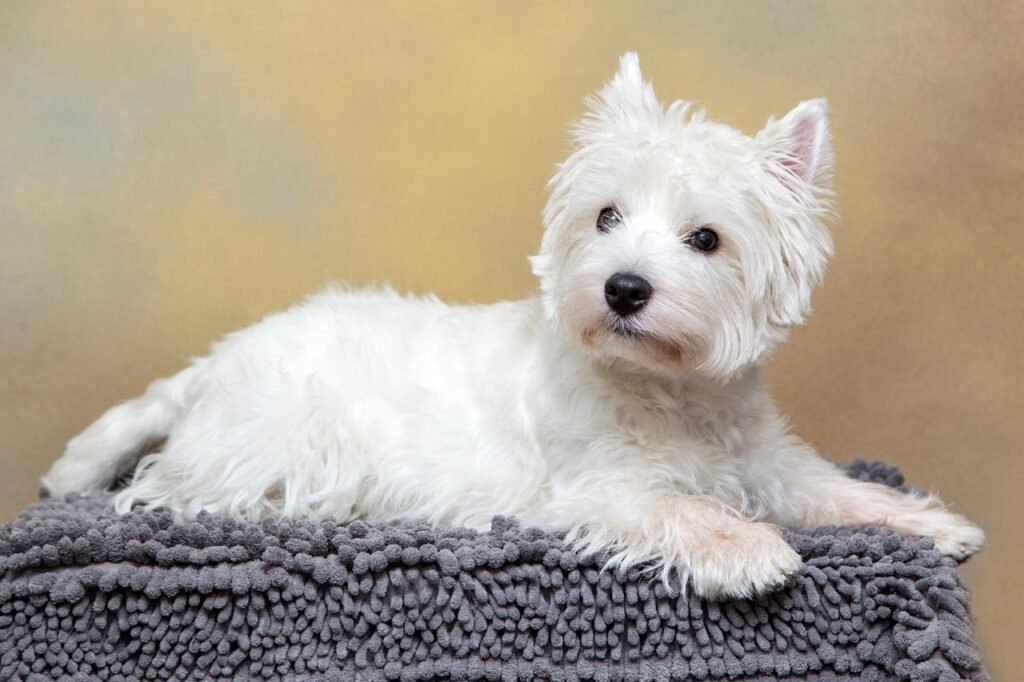
Westies may be small, but their personalities are anything but. With their snowy coats and mischievous spark, they’re like little bundles of joy who always seem ready for an adventure. It’s hard not to smile when a Westie tilts their head as if they’re truly listening to every word you say.
Description & popularity. Bred in Scotland to hunt vermin, Westies are bold, energetic, and affectionate. Their cheerful, confident personalities make them a favorite choice for families looking for a compact companion.
Cute traits. Their perky ears, dark button eyes, and expressive faces make them look like living storybook characters. They carry themselves with a playful bounce that wins hearts everywhere.
Health concerns. Westies often struggle with atopic dermatitis (skin allergies), recurrent skin infections, and even airway issues linked to chronic inflammation. Left untreated, these conditions can impact comfort and lifespan.
Care tips. Owners should commit to allergy management, medicated baths if needed, flea prevention, and high-quality diets to minimize flare-ups.
#17 – Scottish Terrier
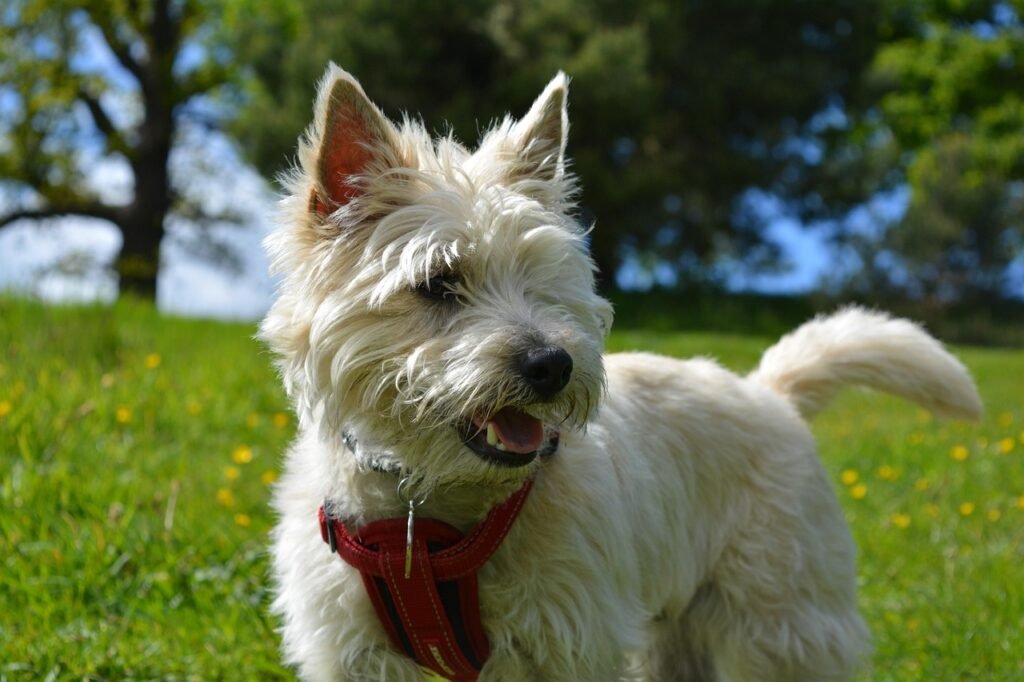
With their iconic beards and dignified strut, Scottish Terriers look like little lords of the dog world. They carry themselves with confidence, but beneath that serious appearance is a loyal, affectionate companion who bonds deeply with their humans.
Description & popularity. Known for their independence and strong personalities, Scotties are a Scottish breed once bred to hunt foxes and badgers. They remain popular as loyal family companions and watchdogs.
Cute traits. Their expressive eyebrows, wiry coats, and sturdy little frames make them instantly recognizable. They may be small, but they look endlessly charming with their proud “big dog” attitude.
Health concerns. Scotties are at higher risk for bladder cancer, jawbone disease, and skin issues. These hidden conditions can cause chronic discomfort and shorten their lifespan.
Care tips. Routine urine screenings, early vet checks for any changes, and keeping them lean on a balanced diet are key to keeping Scotties healthy.
#16 – Pembroke Welsh Corgi
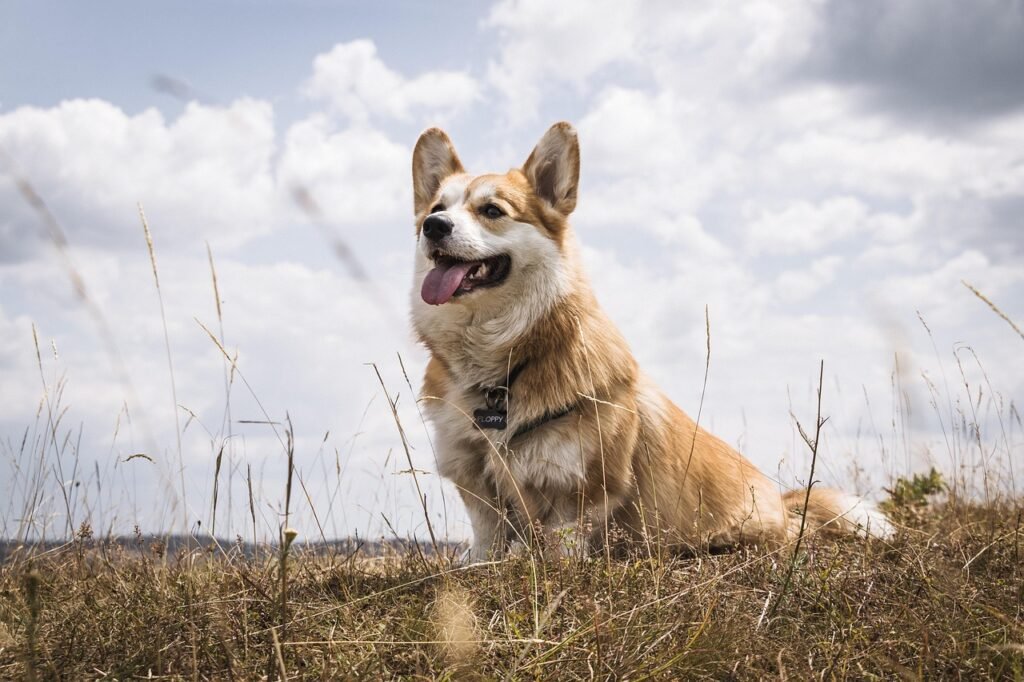
Few things are cuter than a Corgi bum wiggling down the street. With their short legs and big smiles, Corgis are pure joy in a small, fluffy package. Their friendly energy and clownish antics make them impossible not to love.
Description & popularity. Once the favored breed of Queen Elizabeth II, Corgis are famous worldwide. Originally herding dogs, they’re intelligent, loyal, and adaptable, making them popular with both city and country families.
Cute traits. Their fox-like faces, perky ears, and fluffy rears make them social media stars. Add in their tendency to “smile” at their humans, and you’ve got one of the most photogenic dogs around.
Health concerns. Due to their long backs and short legs, Corgis are prone to intervertebral disc disease (IVDD), hip dysplasia, and degenerative myelopathy. These spinal and joint issues can lead to mobility problems and reduced healthy years.
Care tips. Prevent jumping (use ramps), keep them lean, and give them regular low-impact exercise. Early recognition of back issues is crucial.
#15 – Havanese
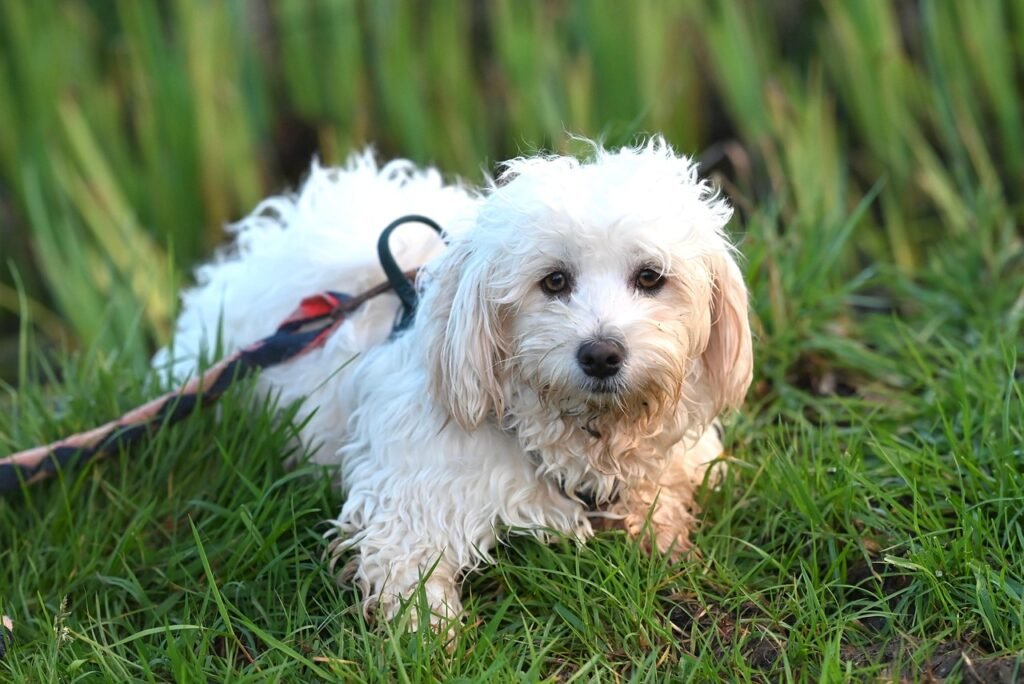
The Havanese is like sunshine wrapped in fur. Always cheerful and eager to be by your side, they thrive on human connection. They’re the kind of dogs that make a house feel instantly more like home just by being there.
Description & popularity. As Cuba’s national dog, Havanese were bred to be companion animals—and they excel at it. Their adaptable and affectionate personalities have made them increasingly popular around the world.
Cute traits. Their long, silky coats, bright eyes, and playful bounce make them look like little living dolls. They’re natural charmers, winning hearts with their cuddly, clownish personalities.
Health concerns. Havanese are prone to patellar luxation, hip dysplasia, and eye problems, which can cause discomfort and gradually reduce their active years.
Care tips. Keeping them fit, trimming nails regularly, avoiding high jumps, and scheduling eye exams helps them stay healthy and playful.
#14 – Bichon Frise
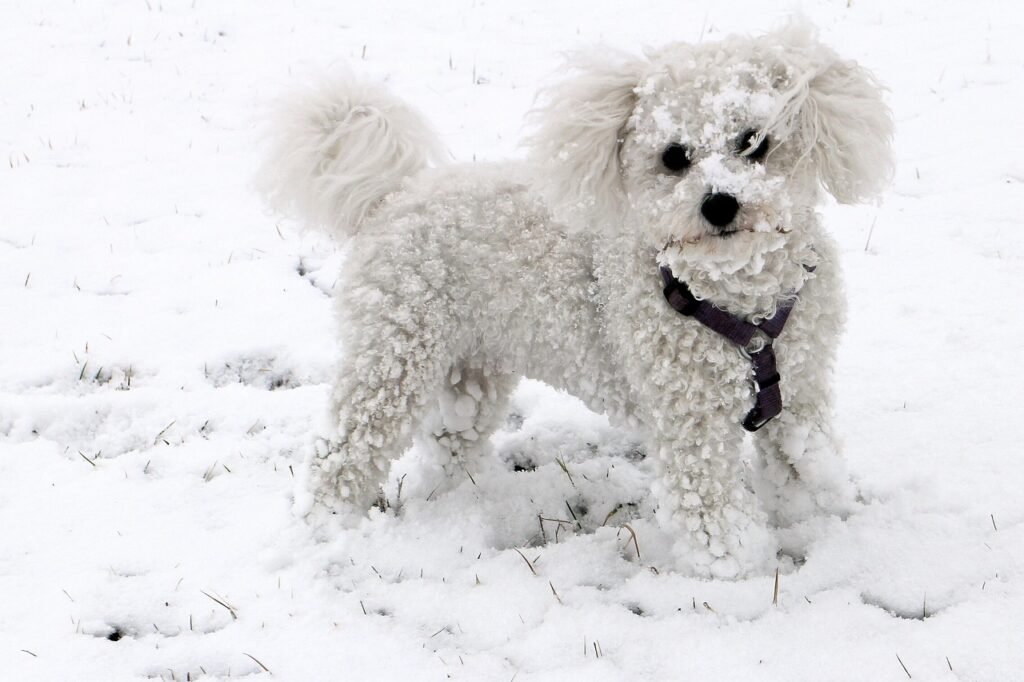
Bichons are like little clouds with legs—always cheerful, always ready to bring a smile. They carry an air of innocence, and when they bounce toward you with those round black eyes, it feels like pure joy wrapped in fur.
Description & popularity. Bred as companion dogs, Bichons are affectionate, adaptable, and hypoallergenic in reputation, making them popular in households with allergy concerns. Their happy-go-lucky attitude suits families, singles, and seniors alike.
Cute traits. Their cotton-ball coats, button noses, and lively personalities give them an almost toy-like quality. They’re the kind of dogs that brighten every room they enter.
Health concerns. Common issues include allergies, dental disease, and luxating patellas. These problems can quietly chip away at their comfort and reduce their overall healthy years if not addressed.
Care tips. Regular professional grooming, daily dental care, and joint-friendly living conditions are key. Allergy management through diet and vet care can make a big difference.
#13 – Lhasa Apso
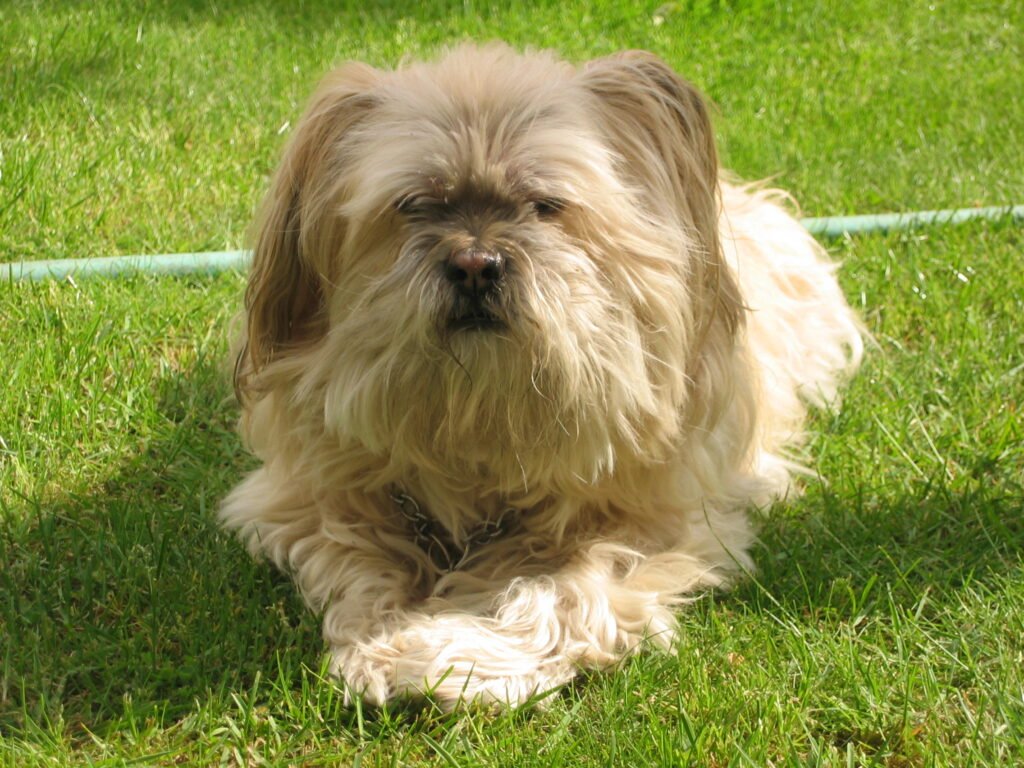
Lhasa Apsos look like royal little lions but act like wise, independent companions. They carry themselves with dignity yet surprise you with their playful, affectionate side when they let their guard down.
Description & popularity. Originally bred in Tibet as sentinel dogs for monasteries, Lhasas are alert, loyal, and protective. Their flowing coats and intelligent gazes make them stand out among small breeds.
Cute traits. Their long, silky fur and confident stance make them look like living plush toys. Their curious, cat-like independence adds to their unique charm.
Health concerns. Hidden issues may include eye disease, kidney problems in some lines, and skin allergies. Chronic conditions can gradually shorten their healthy lifespan.
Care tips. Choose health-tested breeders, keep up with regular eye exams, and maintain consistent coat grooming and nutrition.
#12 – Pekingese
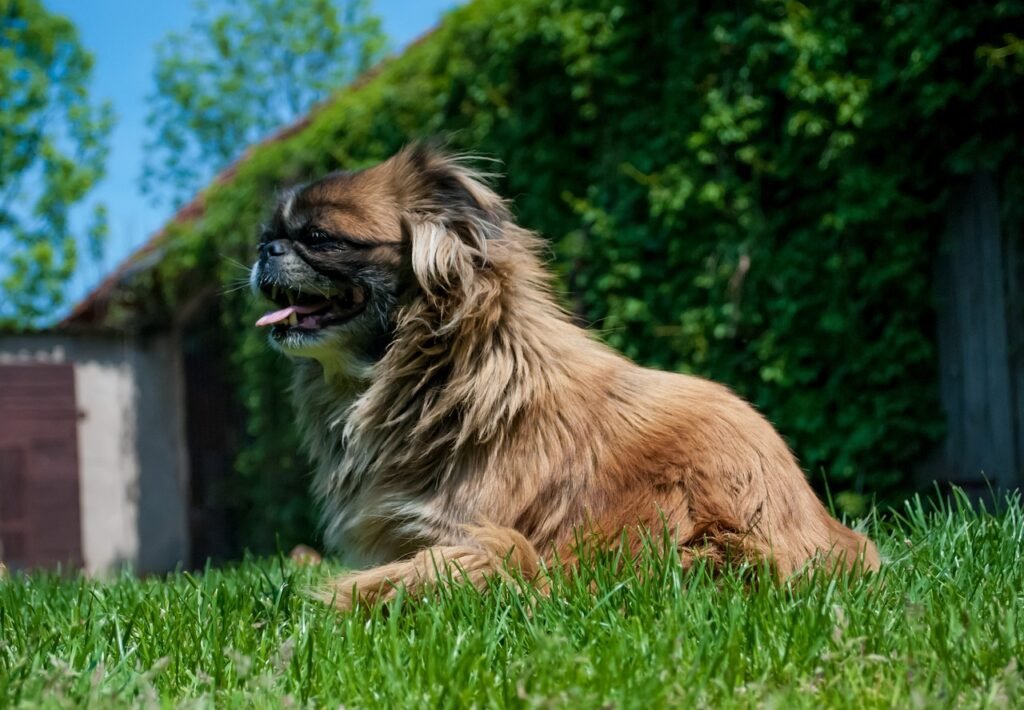
With their lion-like manes and soulful stares, Pekingese carry a regal air that makes you feel like you’re in the presence of royalty. Yet behind that proud look, they’re affectionate lap dogs who bond deeply with their people.
Description & popularity. Once the prized companions of Chinese emperors, Pekingese remain cherished for their dignity and loyalty. They thrive in calm households where they can be both guardians and cuddly companions.
Cute traits. Their abundant coats, flat faces, and charming waddle make them look like little lion dolls. They’re small, but they know how to command attention.
Health concerns. Pekingese are prone to brachycephalic airway syndrome, eye injuries, and back problems. These can limit activity and shorten lifespan if unmanaged.
Care tips. Keep them cool, protect their eyes, prevent jumping, and monitor breathing. Regular vet visits help catch issues early.
#11 – Maltese
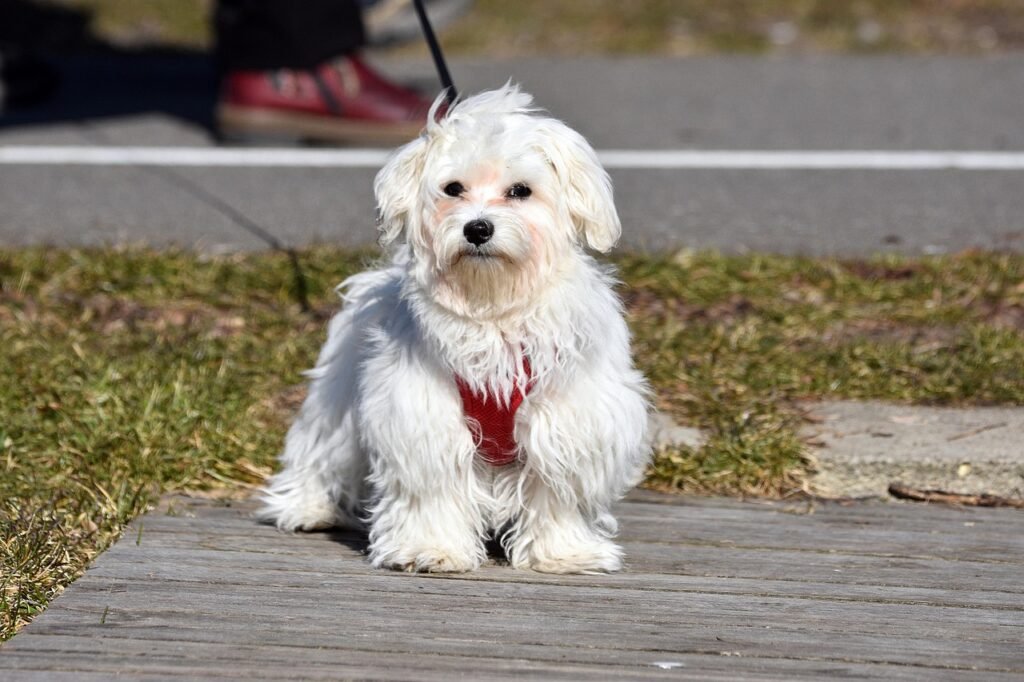
Few dogs look as angelic as the Maltese, with their pure white coats and dark, soulful eyes. They’ve been beloved lap dogs for centuries, and it’s easy to see why—when they snuggle up, you feel wrapped in pure love.
Description & popularity. Originating from the Mediterranean, Maltese dogs are gentle, lively, and affectionate. Their small size and sweet temperament make them a popular choice for city living.
Cute traits. Their flowing, silky hair and delicate features make them look like tiny fairy-tale companions. They carry themselves with grace while still being playful and silly.
Health concerns. Common issues include dental disease, luxating patellas, and tear staining linked to eye problems. If ignored, these can impact comfort and quality of life.
Care tips. Daily tooth care, safe play environments, and regular eye cleaning are essential. Grooming helps keep their coat healthy and skin free from irritation.
#10 – Yorkshire Terrier
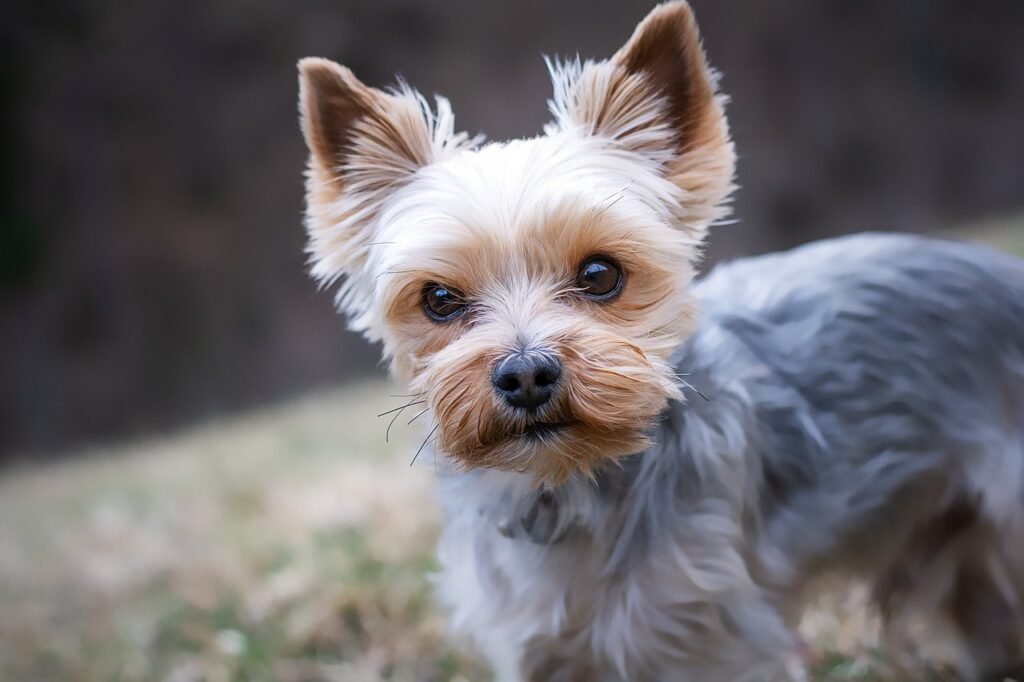
Yorkies may be tiny, but they’re full of sass and sparkle. With their glamorous coats and bold personalities, they act like little divas in the best possible way—always ready to strut their stuff and steal the spotlight.
Description & popularity. Originally bred as ratters in England, Yorkies evolved into beloved lap dogs known for their elegance and confidence. They’re among the most popular toy breeds worldwide.
Cute traits. Their silky, floor-length coats and bright, curious eyes make them look like living dolls. Despite their size, they carry themselves with fierce confidence, which only adds to their charm.
Health concerns. Yorkies can face dental issues, tracheal collapse, portosystemic shunts, and patellar luxation. Left untreated, these problems can reduce both comfort and longevity.
Care tips. Harnesses instead of collars, early dental care, and health screenings for liver function are crucial. Regular grooming keeps them looking and feeling their best.
#9 – Pomeranian
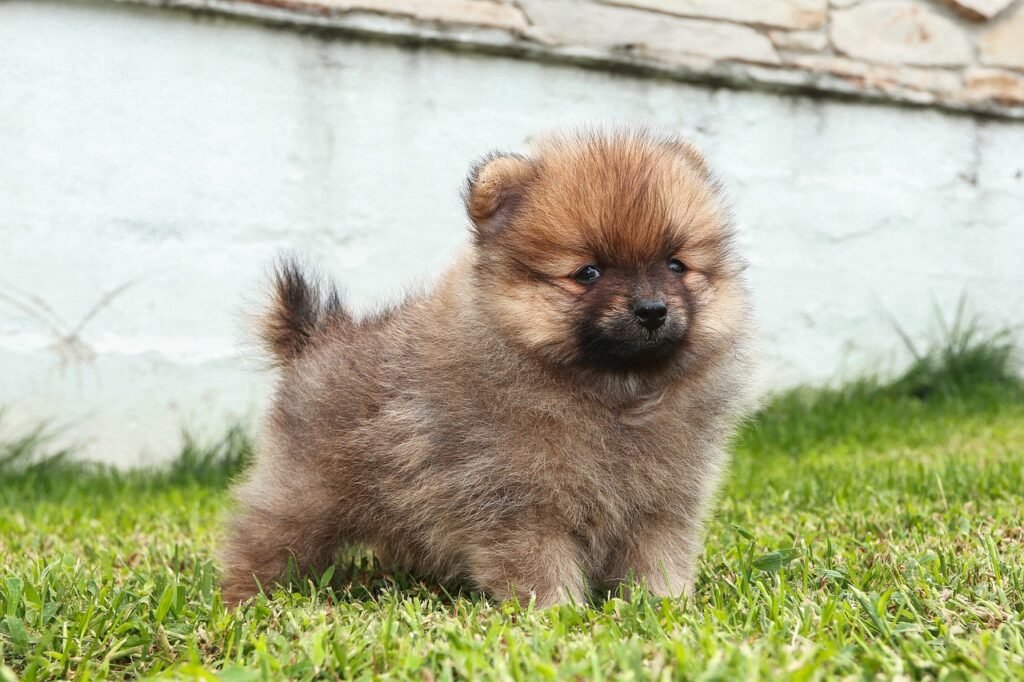
Pomeranians are like little firecrackers wrapped in fluff. They may only weigh a few pounds, but their personalities are as big as their lion-like manes. A Pom can make you laugh one minute and melt your heart the next with their teddy bear looks.
Description & popularity. Descended from larger sled dogs, Poms were bred down to lapdog size and quickly became companions for royalty. Today, they’re adored worldwide for their playful spirit and easy portability.
Cute traits. With their fox-like faces, fluffy coats, and plumed tails carried high, Pomeranians look like tiny, living stuffed animals. They strut with a confidence far beyond their size.
Health concerns. Hidden problems include collapsing trachea, dental crowding, luxating patellas, and coat/skin issues. Breathing issues especially can reduce activity and quality of life.
Care tips. Keep them lean, avoid collars (use a harness), and brush their coats regularly to prevent matting. Routine dental cleanings are essential.
#8 – Chihuahua
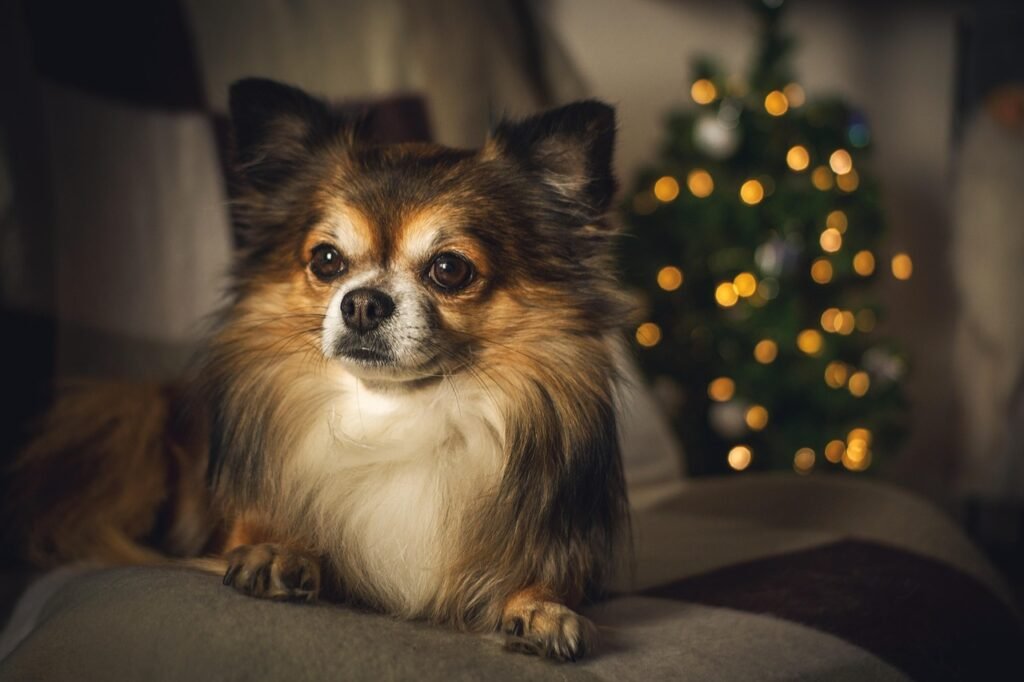
Chihuahuas may be small enough to fit in a purse, but don’t be fooled—their hearts are enormous. They bond fiercely with their humans and often act like little protectors, proving that love and loyalty aren’t measured in size.
Description & popularity. Originating from Mexico, Chihuahuas are among the world’s oldest breeds. Their tiny stature makes them a favorite among city dwellers and seniors who want a portable yet spirited companion.
Cute traits. Apple-shaped heads, oversized eyes, and expressive ears give them a puppy-like look for life. They’re bold, quirky, and endlessly endearing.
Health concerns. Chihuahuas are prone to dental disease, collapsing trachea, patellar luxation, and low blood sugar in puppies. These conditions can cause discomfort and affect lifespan.
Care tips. Start dental care early, use a harness instead of a collar, and provide a stable feeding routine. Protect them from cold weather—they get chilly easily.
#7 – Dachshund
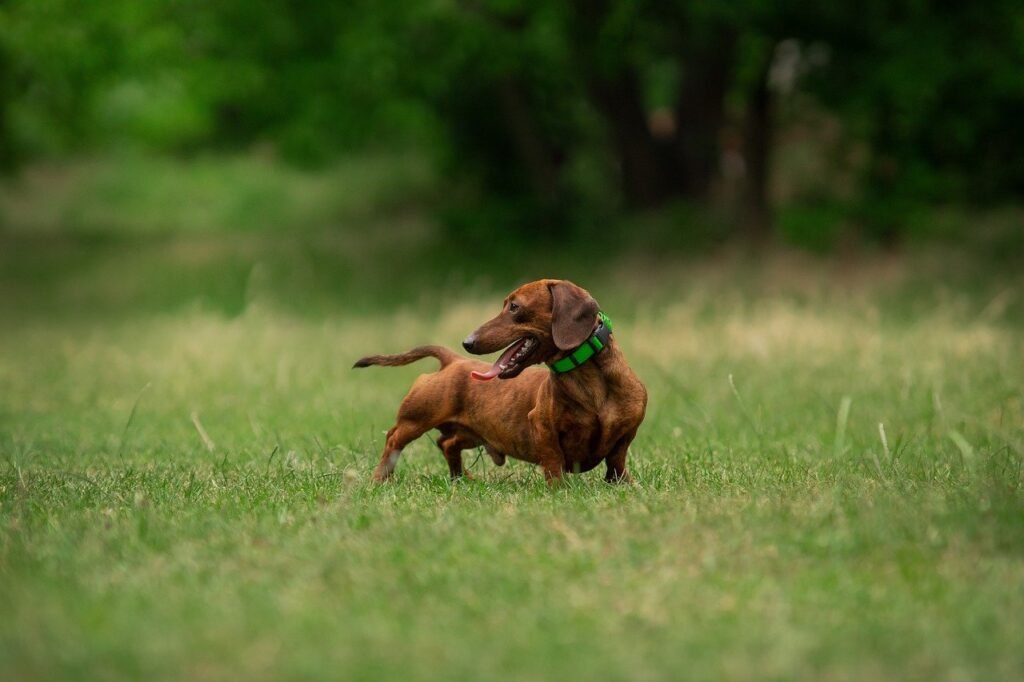
Dachshunds may be small, but their courage is enormous. With their long bodies, short legs, and determined personalities, they bring endless entertainment. Owning a Doxie means living with a mix of comedy, loyalty, and stubborn charm.
Description & popularity. Bred in Germany to hunt badgers, Dachshunds are bold, curious, and affectionate. Their distinctive silhouette has made them one of the most recognizable and beloved breeds worldwide.
Cute traits. Their comical proportions, floppy ears, and soulful eyes make them look like walking cartoons. Their playful antics add to their irresistible charm.
Health concerns. Dachshunds face a high risk of intervertebral disc disease (IVDD) due to their long backs, along with dental disease and joint strain. These problems can lead to pain or mobility issues.
Care tips. Prevent jumping (use ramps), keep them lean, and strengthen their muscles with controlled exercise. Quick veterinary care at the first sign of back trouble is vital.
#6 – Shih Tzu
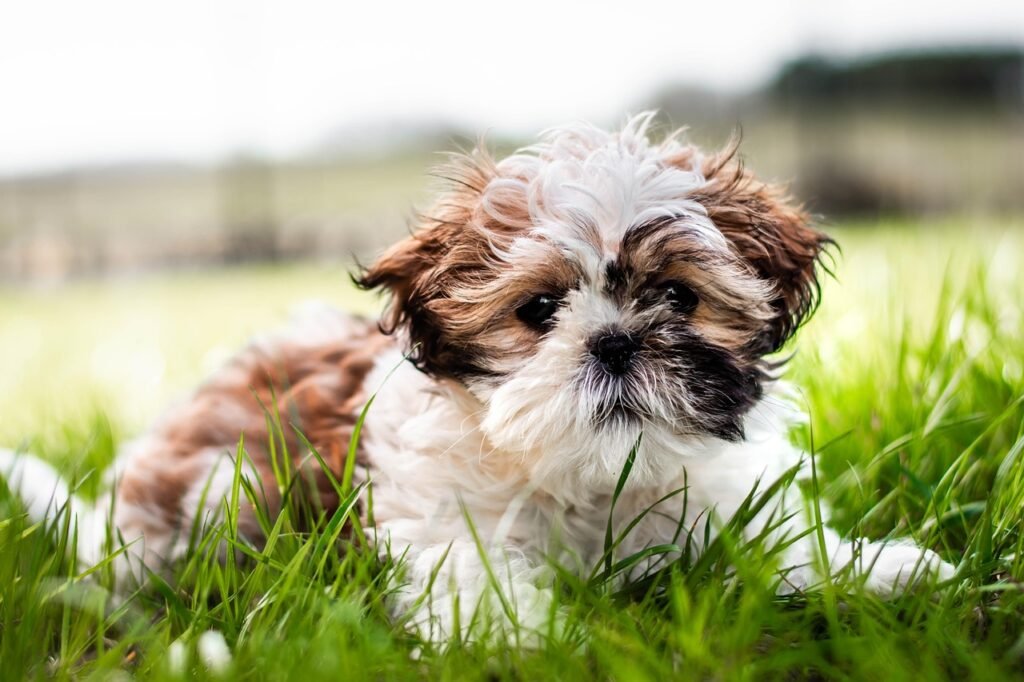
Shih Tzus are true lap dogs—gentle, loving, and always happy to be by your side. With their flowing coats and sweet expressions, they look like little royal companions who never forgot their palace origins.
Description & popularity. Originally bred for Chinese nobility, Shih Tzus are affectionate and calm, making them excellent house pets. Their small size and easygoing nature keep them popular with families and seniors.
Cute traits. Their large eyes, button noses, and long, silky hair give them a plush-toy appearance. They’re happiest when showered with love and attention.
Health concerns. Common problems include brachycephalic breathing issues, dry eye, dental crowding, and IVDD. These can cause chronic discomfort if not managed.
Care tips. Daily eye cleaning, dental care, and careful grooming are essential. Use ramps to protect their backs, and always keep them at a healthy weight.
#5 – Boston Terrier
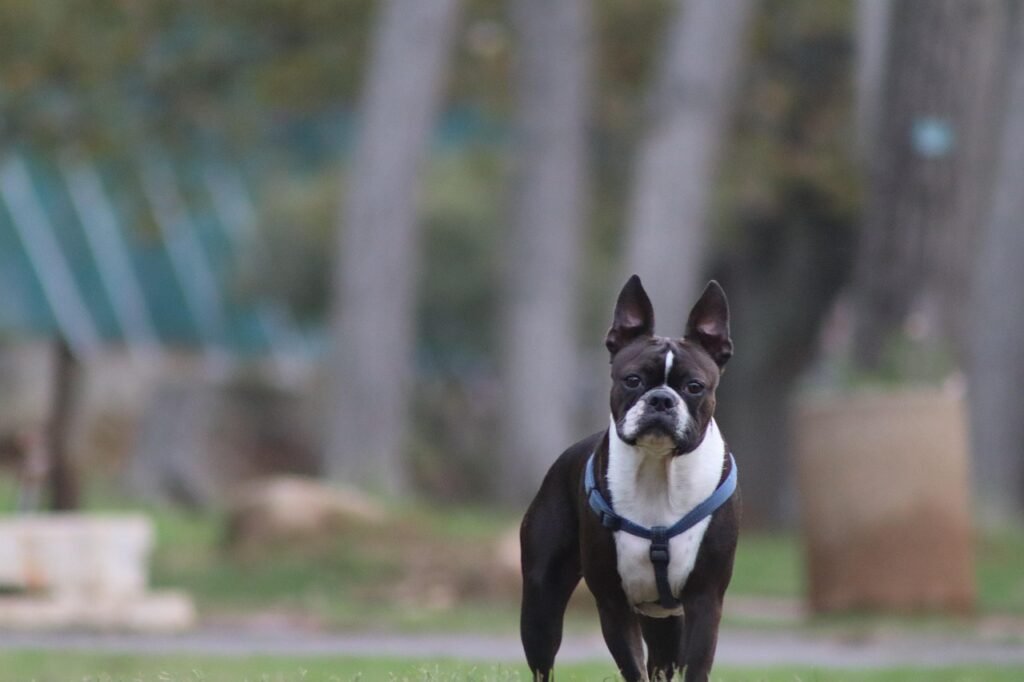
Intro. Nicknamed the “American Gentleman,” Boston Terriers win hearts with their tuxedo coats and charming personalities. They’re playful clowns who adore their families and know exactly how to make people laugh.
Description & popularity. Developed in the U.S., Bostons are compact, affectionate, and adaptable. Their small size and social nature make them a great fit for city living.
Cute traits. Big, round eyes, perky ears, and tuxedo markings give them a polished yet comical appearance. They’re lively little companions who thrive on attention.
Health concerns. Boston Terriers may suffer from brachycephalic breathing issues, eye injuries, allergies, and knee problems. Unaddressed, these can reduce their comfort and longevity.
Care tips. Choose lines with longer muzzles, keep their eyes protected, manage allergies, and always use a harness for walks instead of a collar.
#4 – English Bulldog
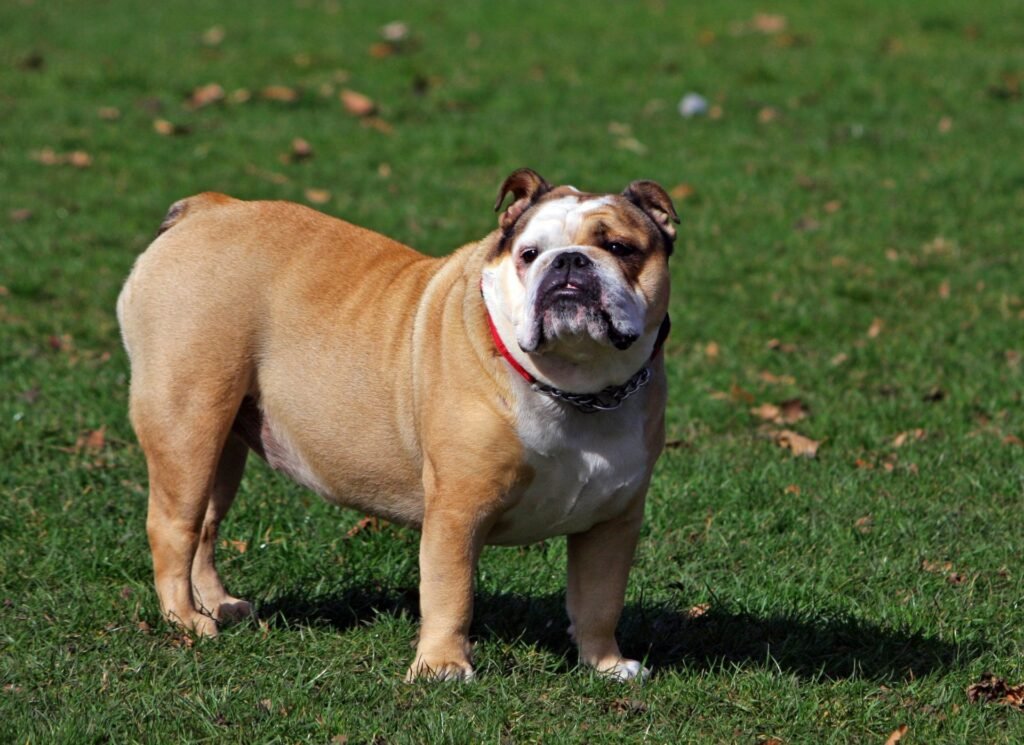
With their droopy faces, rolls of wrinkles, and lovable waddle, English Bulldogs look like grumpy old men—but anyone who’s lived with one knows they’re giant sweethearts. Bulldogs are happiest snoring at your feet or leaning in for a slobbery kiss, proving they’re gentle giants in stocky little bodies.
Description & popularity. Originally bred in England, Bulldogs have gone from fierce bull-baiters to affectionate companions. They remain one of the most iconic and popular breeds, adored for their easygoing nature and goofy charm.
Cute traits. Their wrinkly faces, undershot jaws, and expressive eyes make them instantly endearing. Despite their stocky build, they carry themselves with surprising dignity.
Health concerns. Sadly, Bulldogs are at high risk of severe brachycephalic airway issues, skin-fold infections, joint pain, and cherry eye. These conditions often shorten their lifespan significantly.
Care tips. Choose Bulldogs with more moderate features. Keep them lean and cool, clean their skin folds daily, and ask vets about airway evaluations. A harness instead of a collar is a must.
#3 – Cavalier King Charles Spaniel
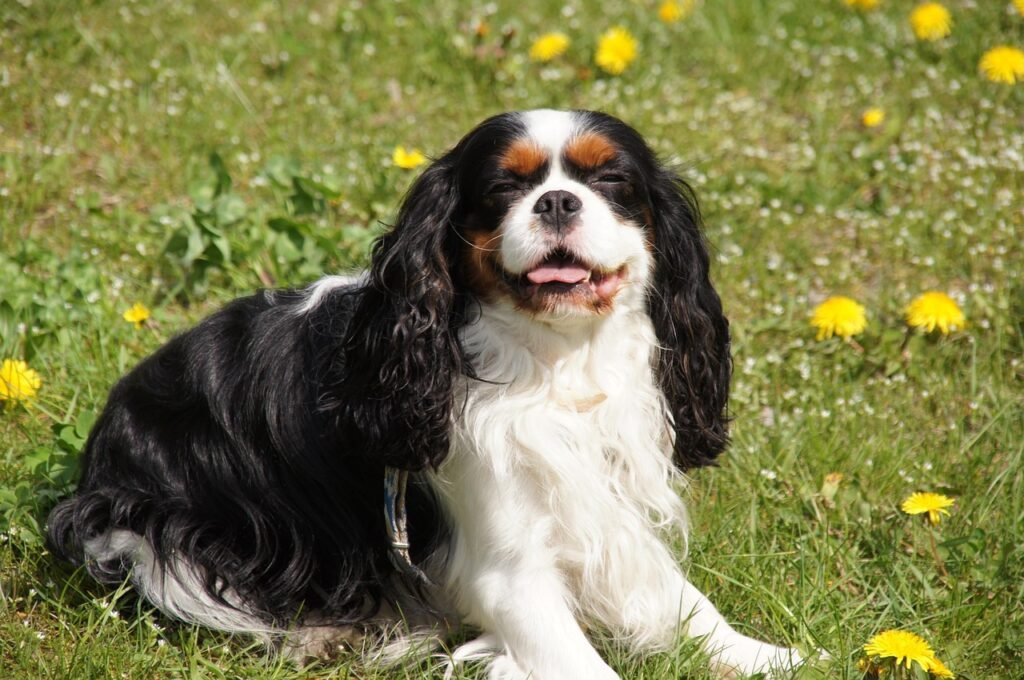
Cavaliers have a way of stealing hearts the moment they look at you with those big, soulful eyes. Gentle and affectionate, they were born to be lap dogs, and they’ll happily spend hours snuggling with you. They bring a calming sweetness into any home.
Description & popularity. Originally bred as companions for royalty, Cavaliers are still cherished for their affectionate, easygoing nature. They’ve remained popular across the U.S. and U.K., especially among families and seniors.
Cute traits. Their velvet ears, silky coats, and warm expressions give them a “storybook” charm. They’re playful yet soft, making them perfect family companions.
Health concerns. Cavaliers are heavily affected by mitral valve disease (MMVD), often leading to heart failure later in life. They’re also prone to syringomyelia and eye issues. These hidden health problems can severely shorten lifespans.
Care tips. Look for breeders who cardiac-test parents. Keep weight low, schedule echocardiograms after age 4–5, and manage activity as their heart health changes.
#2 – Pug
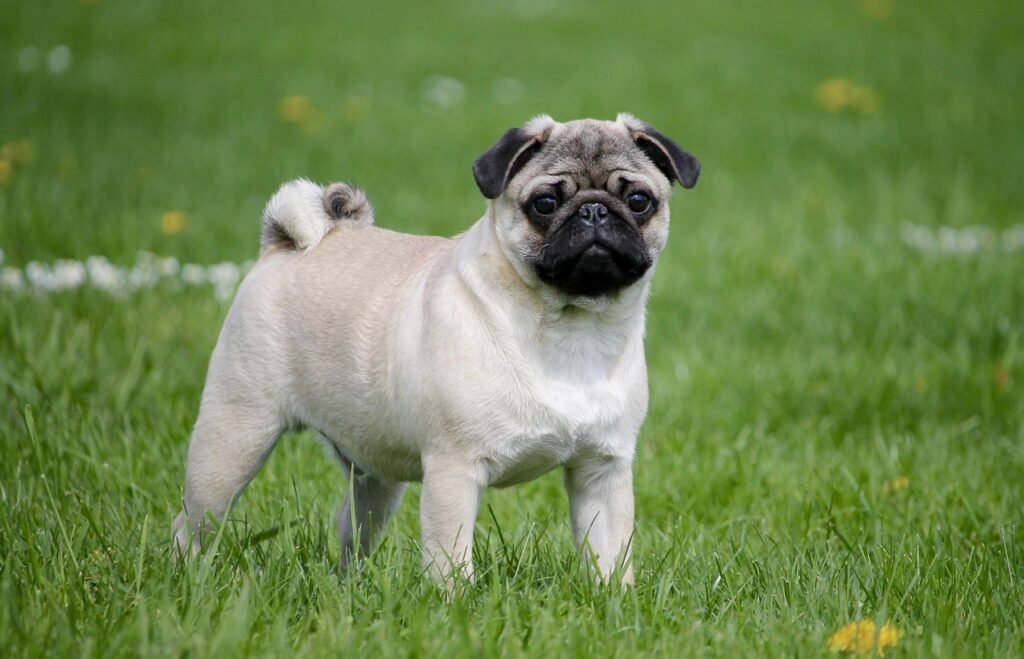
Pugs are little comedians wrapped in fur. With their bug eyes, curly tails, and goofy snorts, they know exactly how to make people laugh. They love being the center of attention and thrive on making their families happy.
Description & popularity. Originating in China as lap dogs for emperors, Pugs have become one of the most beloved toy breeds worldwide. Their adaptable, people-loving nature keeps them at the top of popularity lists.
Cute traits. Their round heads, expressive faces, and playful energy make them irresistible. They often act like clowns, bringing joy with every wiggle and snort.
Health concerns. Pugs often struggle with BOAS (airway issues), eye ulcers, spinal problems, and obesity. Chronic breathing strain and eye injuries can shorten their lifespans.
Care tips. Keep them slim, avoid heat, and protect their eyes during play. Regular vet checks for breathing and weight are essential for keeping them healthy.
#1 – French Bulldog
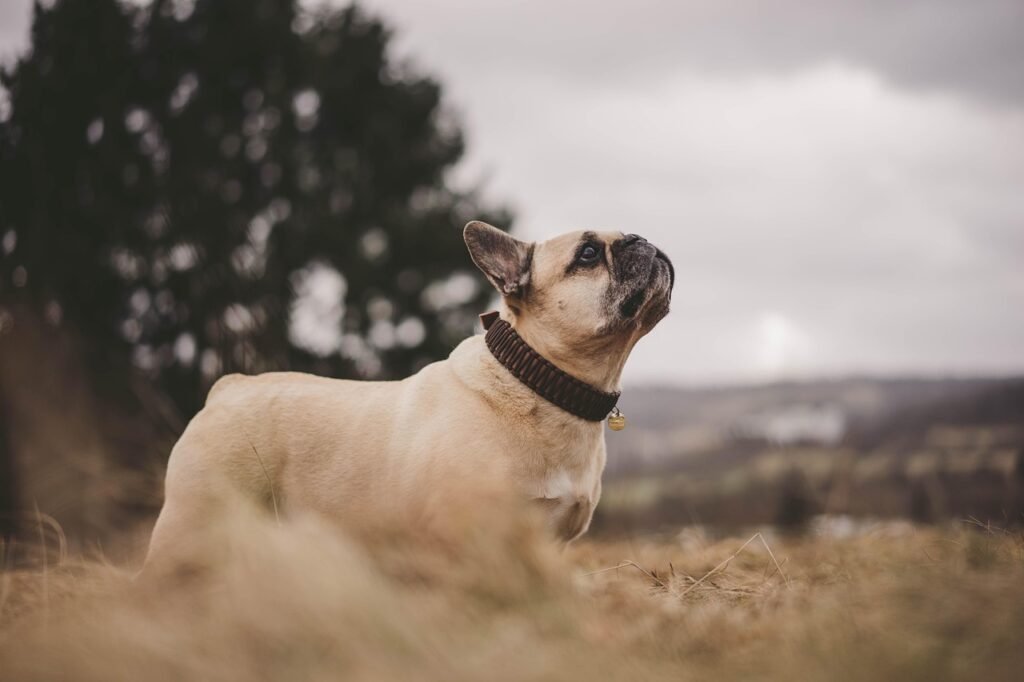
Frenchies are the ultimate charmers. With their bat ears, round eyes, and clownish personalities, they make every day brighter. They’re small in size but huge in heart, and their goofy antics make them one of the most popular breeds in the world.
Description & popularity. French Bulldogs have skyrocketed in popularity thanks to their affectionate nature, compact size, and adaptability to city life. They consistently rank at or near the top of AKC registrations.
Cute traits. Their cartoonish expressions, grumbles, and “Velcro dog” attachment to their humans make them feel like little clowns in dog form.
Health concerns. Frenchies are highly prone to brachycephalic obstructive airway syndrome (BOAS), spinal disorders, eye problems, and skin-fold infections. Breathing difficulties, in particular, can limit both lifespan and comfort.
Care tips. Select Frenchies with wider nostrils and longer muzzles when possible. Keep them cool, lean, and clean between wrinkles. Always walk them with a harness.
Cute Is Wonderful—Healthy Is Better
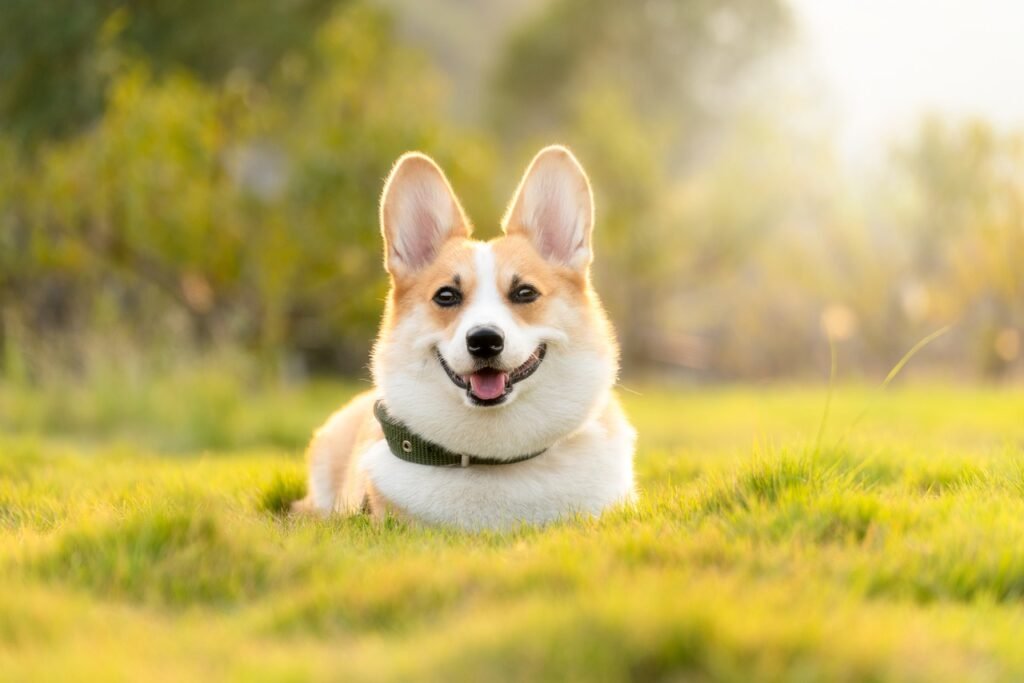
The secret to a great life with any cute dog breed is informed care. Many popular dogs—from squish-faced clowns to plush lapdogs—carry breed-specific risks that can affect breathing, joints, eyes, heart, skin, or even cancer odds. None of this means you shouldn’t adopt your dream dog; it means you should pick the right breeder or rescue partner, budget for preventive care and insurance, and commit to weight management, exercise, grooming, and early screening. That’s how you turn adorable into adorable + durable—maximizing lifespan and quality of life for the furry friend you love.
🐾 Top 5 Takeaways for Dog Lovers
- Cute can come with hidden costs. Many of the most adorable breeds—like Frenchies, Pugs, and Cavaliers—carry serious genetic health risks that can shorten their lives if unmanaged.
- Weight is everything. Obesity is a common thread across nearly every breed (from Labs to Pugs to Dachshunds) and can cut years off a dog’s life. Keeping dogs lean adds quality years.
- Eyes, joints, and breathing are the big three. Small breeds often battle dental and eye issues, while longer-backed or larger dogs face joint problems. Flat-faced breeds struggle with breathing.
- Early detection saves lives. Annual vet checks, breed-specific screenings (like heart echos for Cavaliers or Dobermans), and quick response to changes make a huge difference.
- Love means responsibility. Choosing a breed isn’t just about looks—it’s about committing to their special needs, from grooming and exercise to medical care. Cute dogs live longer, happier lives when we give them the care they deserve.

Andrew Alpin from India is the Brand Manager of Doggo digest. Andrew is an experienced content specialist and social media manager with a passion for writing. His forte includes health and wellness, Travel, Animals, and Nature. A nature nomad, Andrew is obsessed with mountains and loves high-altitude trekking. He has been on several Himalayan treks in India including the Everest Base Camp in Nepal.






